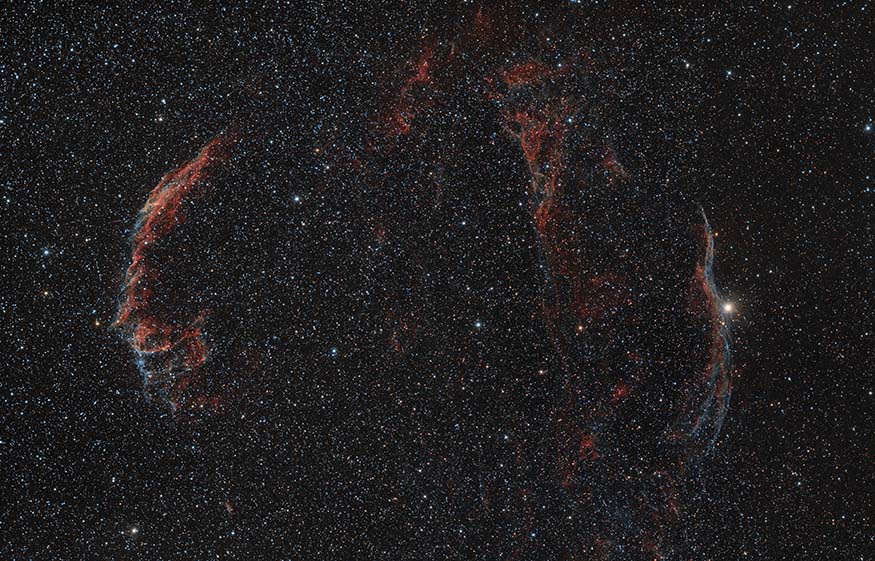
BEAUTY:  BRAGGING RIGHTS: A beautiful sight
BRAGGING RIGHTS: A beautiful sight
HOW EASY IS IT TO SEE? Best with a rich-field telescope
BEST TIME TO SEE IT: Fall (in Cygnus)
TYPE: Supernova Remnant
DISCOVERED: 1784 by William Herschel
Tomb of an unknown star. Unlike the famous Crab Nebula, there are no records marking the death of the star that spawned the Veil Nebula. Its star exploded at least 5,000 years ago, before the invention of writing. The gaseous remains of the supernova have expanded since then, now encompassing an area several times wider than the full moon (as seen from Earth). Different fragments in the nebula shine brighter than others, and they have their own names. Caldwell 33 (also known as NGC 6992) is the bright Eastern Veil, while Caldwell 34 (NGC 6960) is the fainter Western Veil. To find the nebula, start at Epsilon Cygni and then move about 3 degrees south to 52 Cygni. If your skies are dark enough, you should see the Western Veil touching 52 Cygni. Using binoculars or a rich-field telescope will help, as will dark skies and using averted vision.